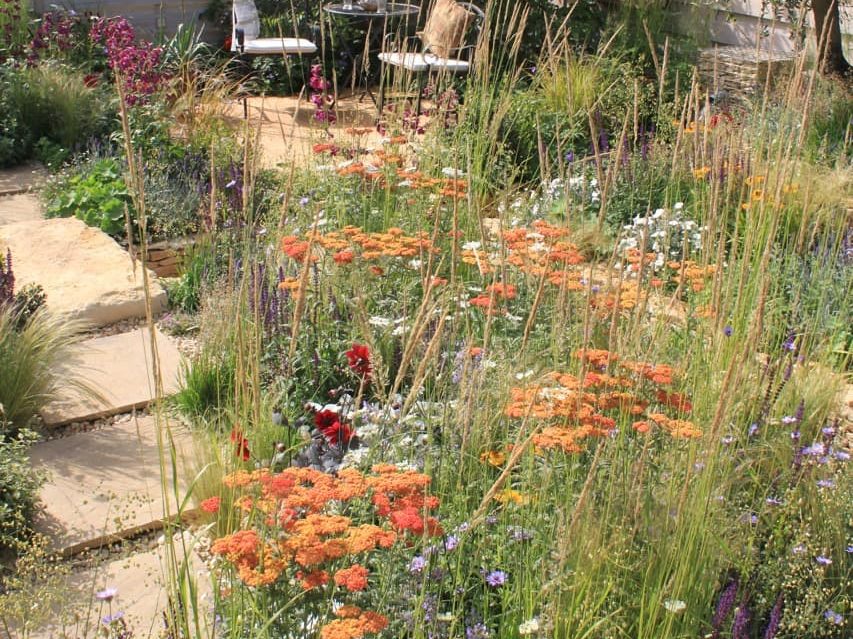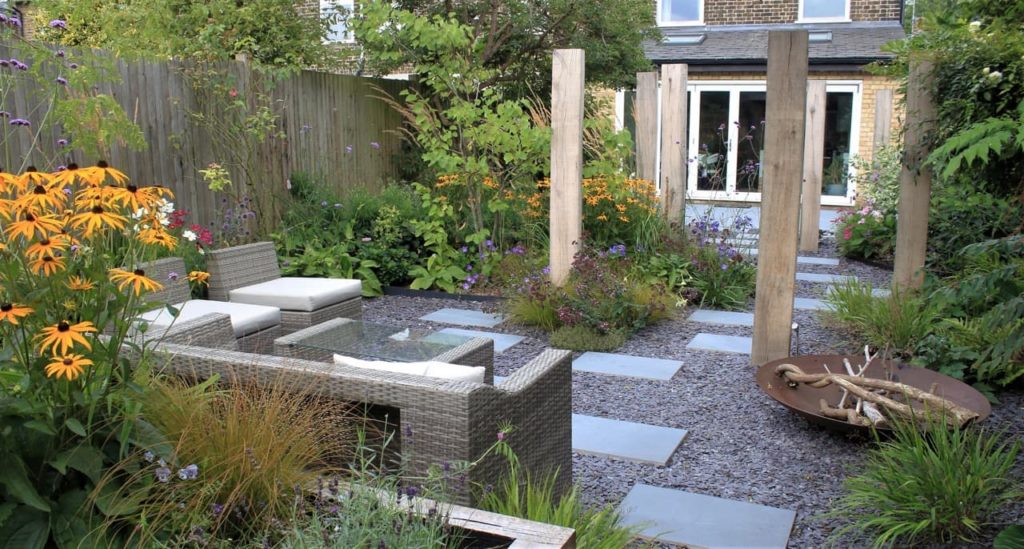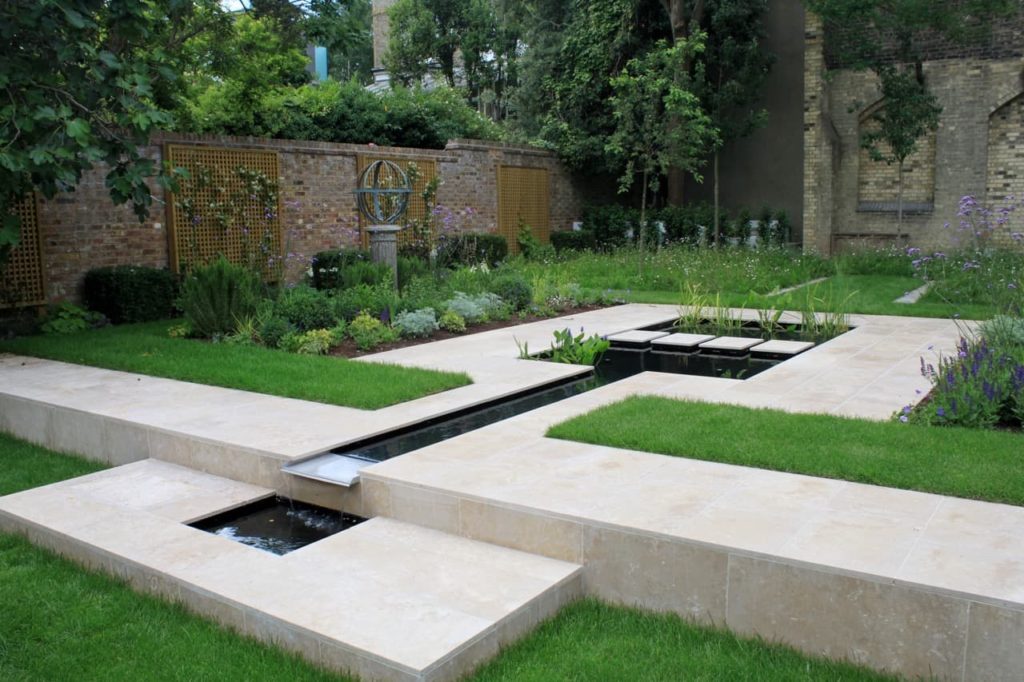Designer Peter Reader On Retaining Elements Of A Garden: ‘Never Write Off Existing Plants’

Contributions From PETER READER

Peter Reader transitioned from a career as a GP to pursue his passion for garden design. He earned a Diploma in Garden Design with Distinction from the prestigious KLC School of Design and is an RHS Silver-Gilt award winner. Peter is also a member of the Society of Garden Designers.
Initially working full-time as a GP for twelve years, Peter Reader found his true calling in Garden Design when he made the change of career in 2011.
Being a passionate gardener and seeing garden design as a career become a possibility, Peter decided to pursue his passion at the respected KLC School of Design, graduating with Distinction.
He soon hit the ground running, receiving RHS Silver Gilt Medals for show gardens at RHS Hampton Court in 2013 and 2014, including the People’s Choice Award in 2013.
He has since worked as an independent Garden Designer, crafting an assortment of garden styles suited to each client, ranging from naturalistic to formal planting.
Please note that imagery featured in this interview was provided with permission by Peter Reader.
What Is Your Earliest Memory Of Gardening Or Horticulture?
“I was fascinated by the garden as a young child,” Peter begins.

“I loved seeing the plants come to life in spring and my Dad had a good-sized vegetable patch, which I found very exciting.
“As a result, he made a small veg patch for me, where I planted easy-to-grow crops like lettuce and radish, as well as a couple of rhubarb plants. They were great because they grew so quickly, producing fantastic leaves.”
Can You Discuss Your Transition From A Full-Time GP To Garden Design? What Motivated This Change?
“When I was a child, I was very interested in doing something in the horticultural field, but there wasn’t really a career path I could follow when I was 18,” he explains.
“My parents both worked for the NHS and being a doctor seemed like a rewarding job, so I pursued that. As I was working as a GP, I saw how garden design was taking off and I realised that it was something I wanted to do.
“The more time went on, my internal drive to switch to a career in garden design got stronger. Fortunately, my wife was very supportive, so I resigned from practice and took a year out to retrain.”
How Did Your Previous Careers Prepare You For Your Current Role As A Garden Designer?
“There are a surprising number of similarities between the two roles. As a GP, you listen and talk to people to understand what their problems are, and to help them understand – supporting them through the process.
“Taking a garden design brief, coming up with a design and presenting that to the clients are key roles in garden design and so communication is key to both jobs. Similarly supporting them through the build and implementation phase is a key skill, so there were a lot of really useful transferable skills.

“I’m a sole trader now, and GPs in my day were mostly self-employed so that definitely prepared me for running my own design business. It also gave me a strong ethic of professionalism in my new role and I knew how important proper training was.
“Even though I already knew a lot about plants and gardens, getting additional training in design, construction and a much wider breadth of plant knowledge was vital.”
What Inspires You Creatively When Designing Gardens?
“Nature is a big thing for me,” says Peter.
“Nature’s colours and balance are so brilliant and the structure, form and shape that plants take also inspires me. I draw a lot of inspiration from that and want to mirror the peace and ambience that nature provides in my designs.
“The other part of the jigsaw for me, is the essence of the space. The garden has to feel comfortable in its location. Of course, the client also has to be happy, although this often includes challenging them as well! It’s about tying all of this together.”
How Do You Approach The Unique Challenges And Opportunities Presented By Different Types Of Spaces, Such As Small Urban Gardens Versus Larger Rural Landscapes?
“You’re often presented with a blank canvas or a complete mess which can be challenging. One of the first challenges is to identify the space and consider the client’s budget, but this is where the essence of the space is very helpful.
“It guides you and allows you to place the client’s wishes in the context of that, so spaces, whether small or large, urban or rural, guide you in how to proceed.
“It’s also important to lay down some parameters with the client in initial meetings. Some of this relates to the budget, but also to the limitations of what plants can deliver, as some clients have a very poor understanding of how plants grow and live.

“An almost universal challenge is delivering a green garden that has something interesting in it for the whole year, particularly in a small space where every plant is on display all year. I am sure we have all had clients who want plants that stay the same size and are green and flower all year!
“Touching on this, most clients want a low-maintenance garden, although for many that means no maintenance, which is impossible. The challenge here is selecting the right type of plants for the right place and thinking about how they will change with time and the seasons.”
Do You Have Any Particular Favourite Memories Of A Garden You Have Designed?
“There was quite a small garden in Hampstead that was previously laid with AstroTurf and the fences and decking were rotting,” he shares.
“The clients were updating the garden as much out of necessity as desire. It was one of my first gardens, so it was really exciting to have a team of people come in and fulfil my design.
“This particular garden, when it was finished, was loved by the clients and they have taken up gardening since. For a couple of years after it was finished, they would send me images of the flowers coming through. That was very rewarding.”
How Do You Address Environmental Considerations And Local Ecology In Your Garden Designs?
“In a number of ways. The first is thinking really carefully about the plants. We have longer spells of hot, dry weather now with global warming, especially in spring and summer, so you have to choose the plants that can cope with that.
“However, we still have wet, cold winters, so there’s a tricky balance you have to find. Never write off existing plants either, retaining what is already flourishing in a garden is a vital skill.
“Secondly, for me, the soil is such a key component of any garden. If you keep the soil well and treat it as a living environment, then well-chosen plants will flourish.
“The last thing is to think very carefully about the hardscape, its green footprint and how it impacts the wider space through issues such as managing drainage and retaining water within the garden.”
Are There Any Particular Projects Or Collaborations You Are Looking Forward To?
“The most challenging collaboration is working with nature as an equal partner and developing innovative approaches to delivering new gardens,” says Peter.
“This includes innovative approaches that drive sustainable futures and increase biodiversity as well as reduce carbon emissions.
“I recently wrote an article about how show gardens are still trapped in a traditional mindset of old-fashioned gardening, which can be damaging and not very environmentally friendly.
“In many ways, garden design is leading the way in terms of greening things, but there is still a lot being done that is negative. Sometimes I feel I am doing good by increasing the amount of diverse planting and habitats in a garden, and other times I feel the opposite as a new patio has just been laid.

“The article I wrote was a challenge to gaarden shows and the gardens that are promoted at them. Equally importantly though, it also challenged how they are currently judged and the criteria used.
“Organisers of shows do emphasise that all the gardens should be relocated after use which is great, but the judging criteria seem to still be focused on being aspirational in more mainstream design ways, and often on being ‘neat and tidy’.
“So, I think moving forward, I would like to be challenging people’s ideas around thinking about gardens and what they are for. We need to take our principles about choosing the right plants for the right places and run with it through the whole gardenscape.”

